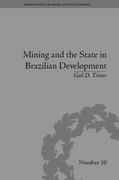Question
What paradigm is used to define the futures price? A: IRP B: Hedge Ratio C: Black Scholes D: Risk Neutral Valuation Find the no-arbitrage cross
What paradigm is used to define the futures price?
A: IRP
B: Hedge Ratio C: Black Scholes D: Risk Neutral Valuation
Find the no-arbitrage cross exchange rate. The dollar-euro exchange rate is quoted as $1.60 = 1.00 and the dollar-yen exchange rate is quoted at $1.00 = 120.
A: 1.25/1.00
B: 1.00/1.92 C: 192/1.00 D: 1.92/100
TheAmerican dollar to Eurospot exchange rate is $1.50/ and the 90-day forward premium is 10 percent. Find the 90-day forward price
A: $1.65/
B: $1.5375/ C: $1.9125/ D: None of the above
Nondollar currency transactions:
A: are priced by looking at the price that must exist to eliminate arbitrage.
B: allow for triangular arbitrage opportunities to keep the currency dealers employed. C: are only for poor people who don't have dollars. D: none of the above.
The efficient market hypothesis (EMH) states that:
A: markets tend to evolve to low transactions costs and speedy execution of orders.
B: current asset prices (e.g., exchange rates) fully reflect all the available and relevant information. C: current exchange rates cannot be explained by such fundamental forces as money supplies, inflation rates and so forth. D: none of the above.
Some commodities never enter into international trade. Examples include:
A: Nontradables
B: Haircuts C: Housing D: All of the above
Open interest in currency futures contracts:
A: tends to be greatest for the near-term contracts.
B: tends to be greatest for the longer-term contracts. C: typically decreases with the term to maturity of most futures contracts. D: a) and c).
The International Fisher Effect suggests that:
A: any forward premium or discount is equal to the expected change in the exchange rate.
B: any forward premium or discount is equal to the actual change in the exchange rate. C: the nominal interest rate differential reflects the expected change in the exchange rate. D: an increase (decrease) in the expected inflation rate in a country will cause a proportionate increase (decrease) in the interest rate in the country.
Generally unfavorable evidence on PPP suggests that:
A: substantial barriers to international commodity arbitrage exist.
B: tariffs and quotas imposed on international trade can explain at least some of the evidence. C: shipping costs can make it difficult to directly compare commodity prices. D: all of the above.
The price of a McDonald's Big Mac sandwich:
A: is about the same in the 120 countries that McDonald's does business in.
B: varies considerably across the world in dollar terms. C: supports PPP. D: none of the above.
Step by Step Solution
There are 3 Steps involved in it
Step: 1

Get Instant Access to Expert-Tailored Solutions
See step-by-step solutions with expert insights and AI powered tools for academic success
Step: 2

Step: 3

Ace Your Homework with AI
Get the answers you need in no time with our AI-driven, step-by-step assistance
Get Started


